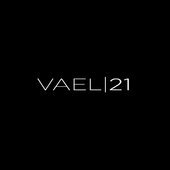If you wanted to get into the technical side there's a lot of fun stuff to learn in the mastering process. I'm sure any programmers on here will remember their post-calculus discrete math and the joys of quantizing. Not to mention phase-cancellation which comes up a LOT in MIDI work and can be tricky to deal with.
Learning the details of a DAW rather than "preset surfing"
Preset surfing can be great if you are moving quick and working from a wider POV. This way you can get something that's "close enough" without it breaking your state.
After that you can go in and fine-tune later to get a better result if needed.
I think the most important thing is being armed with the desire to learn and understand. After firmly establishing the drive to lift the rock and discover what's underneath, the rest has more to do with how you best learn than any one given method.
With that said, given that you have cursory experience with music making, there are always some good steps to take when embarking on the path to understanding your tools. One of the first things I go for, when I want to start digging into a tool, is the INITIALIZE patch or setting. I want a clean slate from which I can start branching out and experimenting. What does this knob do? What does this slider do? How does it change the sound? Well, let's find out. Taking one step at a time is a really important method for understanding what each individual parameter does.
I also will bring up an amplitude scope and frequency spectrometer plugin so I can visualize the change in the sound. I may be able to hear certain things, but hearing it and seeing it at the same time creates a new connection and establishes the idea more firmly in my mind. I also use this method when I teach.
When I teach sound design/patch creation, I start out with subtractive synthesis (and synthesis overall) as the primary concept because subtractive synthesis is the process where you arrive at a desired sound from some original sound source. Learning subtractive synthesis, in this way, allows you to understand how sound is shaped to create a desired result. With this skill under your belt, creating new sounds that you imagine becomes a process of simple reverse engineering.
Again, though, the most important thing is your desire--harness this into a drive and determination and you will learn.






